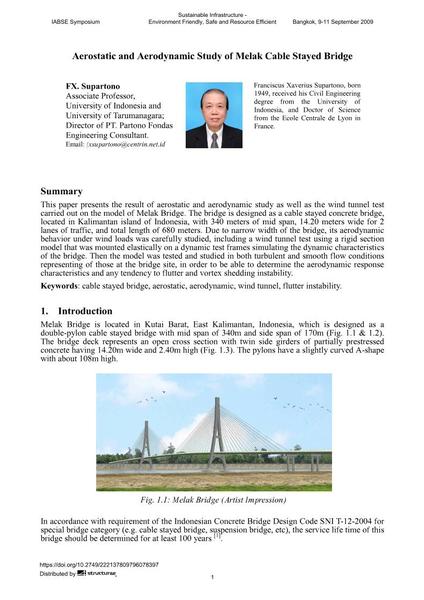Aerostatic and Aerodynamic Study of Melak Cable Stayed Bridge

|
|
|||||||||||
Bibliografische Angaben
| Autor(en): |
FX. Supartono
|
||||
|---|---|---|---|---|---|
| Medium: | Tagungsbeitrag | ||||
| Sprache(n): | Englisch | ||||
| Tagung: | IABSE Symposium: Sustainable Infrastructure - Environment Friendly, Safe and Resource Efficient, Bangkok, Thailand, 9-11 September 2009 | ||||
| Veröffentlicht in: | IABSE Symposium Bangkok 2009 | ||||
|
|||||
| Seite(n): | 11-20 | ||||
| Anzahl der Seiten (im PDF): | 8 | ||||
| Jahr: | 2009 | ||||
| DOI: | 10.2749/222137809796078397 | ||||
| Abstrakt: |
This paper presents the result of aerostatic and aerodynamic study as well as the wind tunnel test carried out on the model of Melak Bridge. The bridge is designed as a cable stayed concrete bridge, located in Kalimantan island of Indonesia, with 340 meters of mid span, 14.20 meters wide for 2 lanes of traffic, and total length of 680 meters. Due to narrow width of the bridge, its aerodynamic behavior under wind loads was carefully studied, including a wind tunnel test using a rigid section model that was mounted elastically on a dynamic test frames simulating the dynamic characteristics of the bridge. Then the model was tested and studied in both turbulent and smooth flow conditions representing of those at the bridge site, in order to be able to determine the aerodynamic response characteristics and any tendency to flutter and vortex shedding instability. |
||||
| Stichwörter: |
Windkanal
|
||||
